Affiliate disclosure: This post may contain affiliate links. Please see our Privacy Policy.
Is it a pet or a practical homesteading bird? Both! The Orpington chicken adores attention and is so gentle that even the youngest toddler won’t upset them. Happy in a backyard or a coop, they’re wonderful egg layers and mothers. Cold hardy as they come, they’re a great starter chicken for beginners.
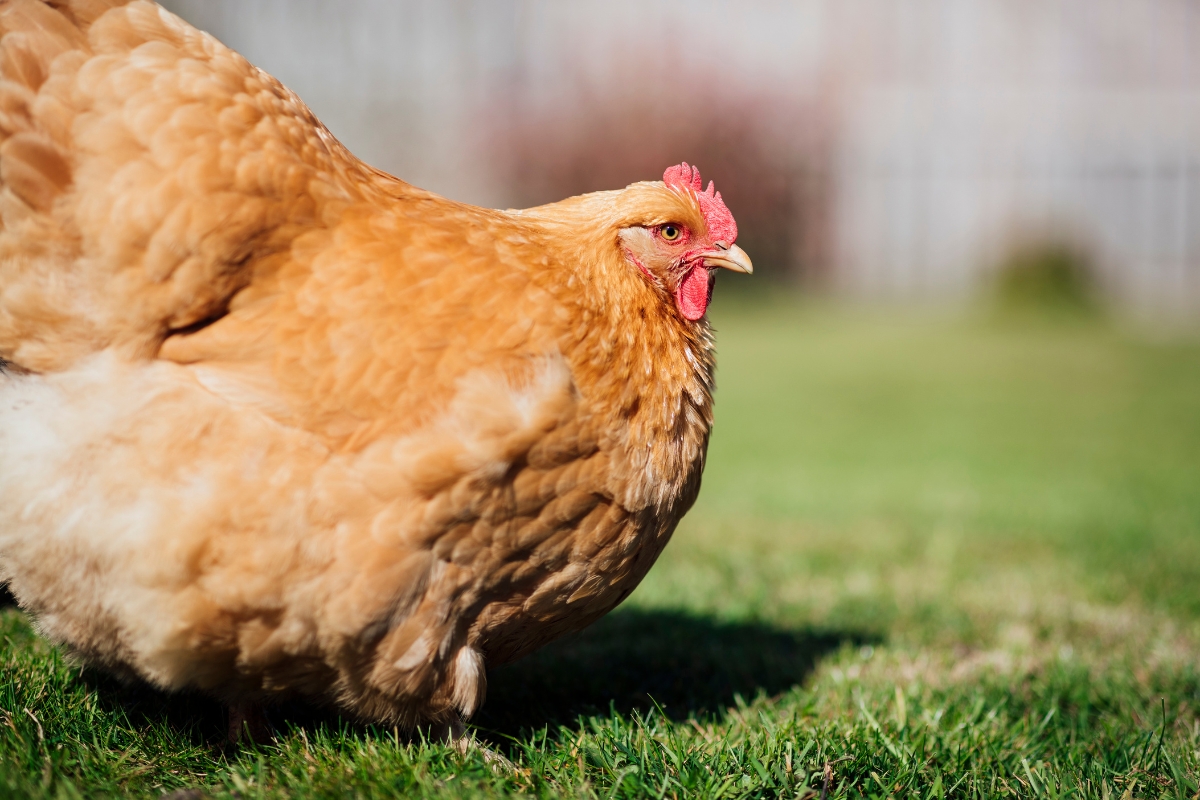
Buff Orpingtons were one of the first chickens I ever raised, many years ago when we were just getting started keeping animals on our homestead. They say that “Chickens are a gateway animal,” and that’s especially true if you’re keeping Orpingtons.
They’re so warm and friendly, you’ll wonder where chickens have been all your life. The fact that they’re especially fluffy helps for visual appeal too.
All those fluffy feathers help keep them warm through our Vermont winters, and this friendly, cold hardy breed will always have a place in our coop.
While buff Orpingtons are the most popular color, these beginner-friendly chickens come in multiple colors, including Buff, Lavender, and Black. You’re more likely to find Black Orpingtons in the UK, and lavender Orpingtons are a lovely iridescent gray color that’s becoming more available at hatcheries due to high demand.
What are Orpington Chickens?
Originally bred in 1866 by William Cook, the Orpington has been a household farm favorite from the beginning. Thought to be a cross between Minorcas, Langshans, and Plymouth Rocks, Cook intended his chickens to be a dual-purpose breed.
But he also had a third goal: breeding a chicken that could be sold in London without looking dirty. The first Orpington breed was black to hide the soot and dirt of the city. A few years later, the Buff Orpington (America’s favorite) was introduced.
While buff-colored chickens are the most common, you can find an Orpington in almost any shade you’re interested in. All varieties share a common heart-shaped body and fluffy feathers.
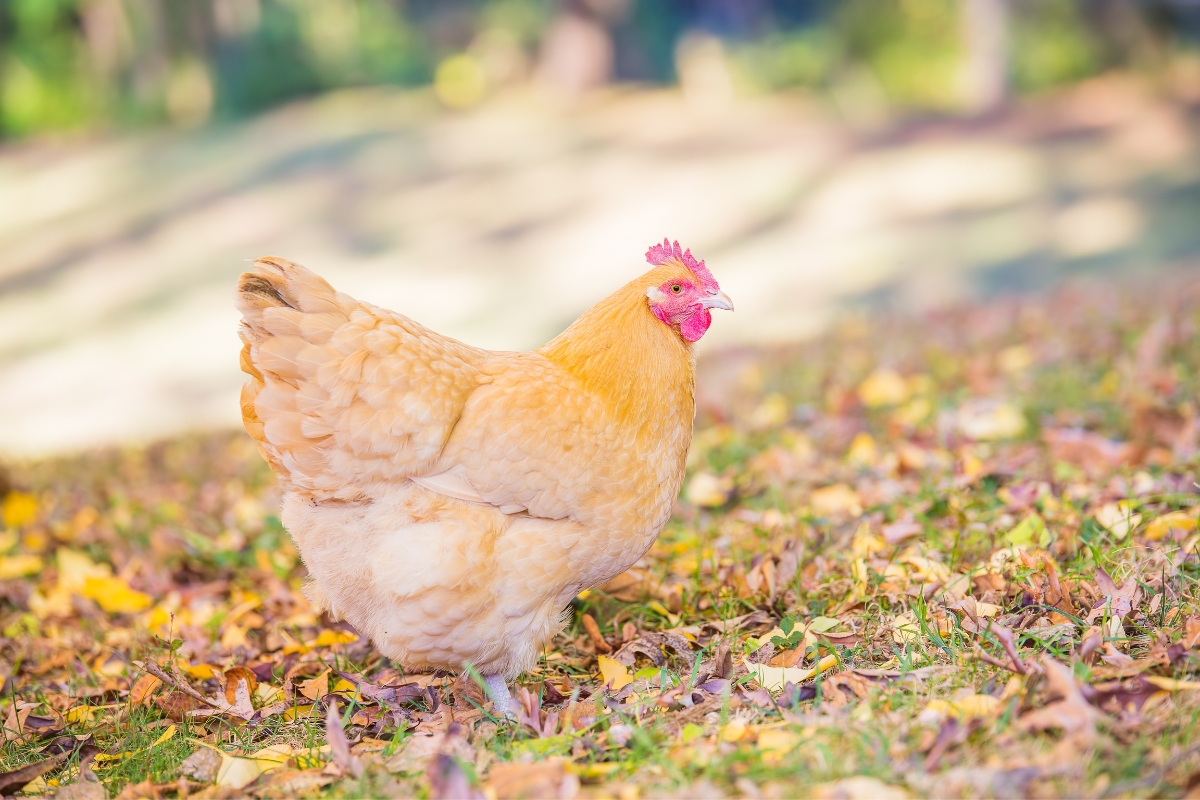
Pros and Cons of Orpington Chickens
Personally, I absolutely love Orpington chickens, but I’ll let you decide if the pros outweigh the cons:
Pros
- Good egg layers
- Excellent table meat
- Gentle and affectionate
- Kid-friendly
- Lots of color varieties
- Cold hardy
Cons
- Costly
- 6-12 months to reach full weight
- Difficult to sex
- Can become too heavy to lay well
Orpington Chicken Characteristics
Quiet and calm, you might not notice your hens are around until they start trying to climb into your lap. While they aren’t energetic birds, they do love to seek out attention from people. The hens make perfect pets for younger children!
Hardy in cold weather, these fluffy chickens will take it easy no matter the season. Excellent egg layers, you can also expect them to offer plenty of meat for the table. Males grow up to 10 pounds in weight while females might not top 8. You can expect them to mature at an average pace, with hens beginning to lay around 22 weeks at the earliest.
- Breed Name: Orpington (Pronounced OR-P-ING-TON)
- Breed Type: Continental
- Temperament: Docile and quiet
- Size: Medium to large; hens average 6-8 lbs, roosters 8-10 lbs
- Eggs Per Year: 150-250
- Egg Size: Medium
- Egg Color: Light brown
- Lifespan: 8-9 years
- Time To Maturity: 22-26 weeks
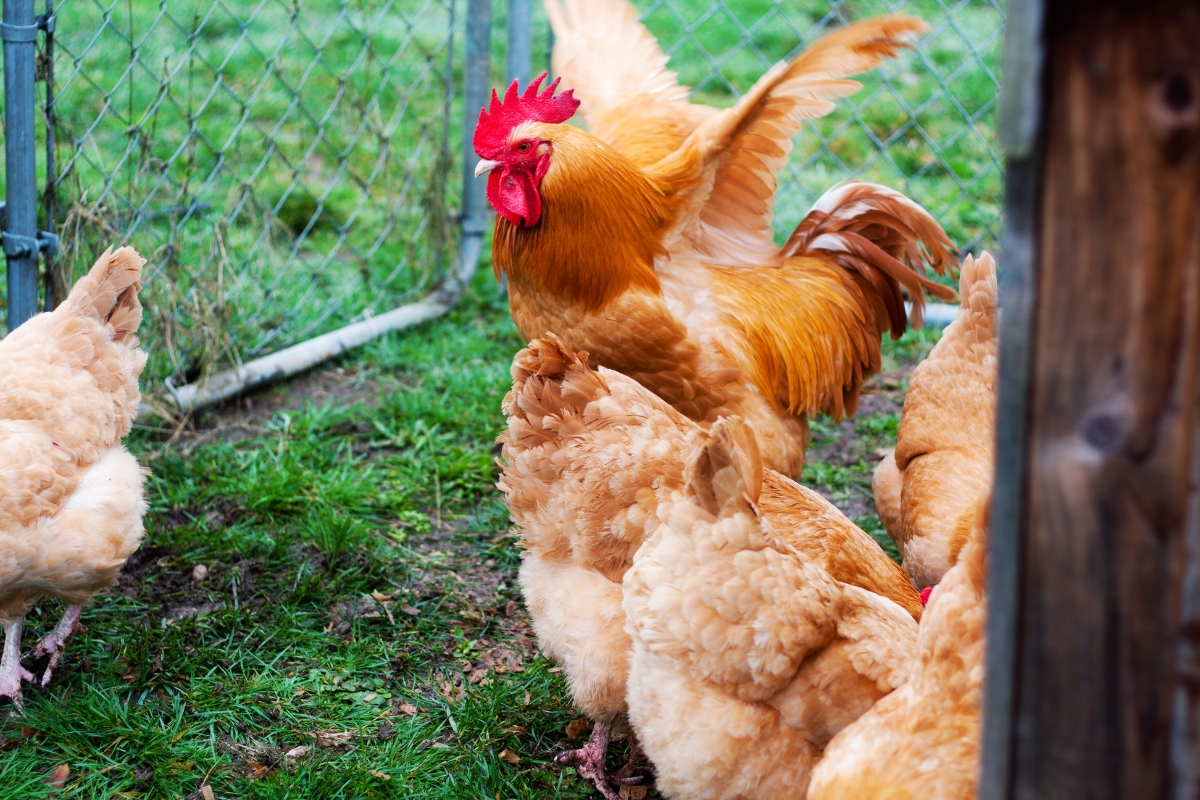
Orpington Breed Standard
Easily recognizable for their heart-shaped bodies, Orpingtons follow some general similarities across all color varieties. Each type will have a deep red single comb and wattle. Hens and roosters will share similarly colored feathers. And no matter what color, you can expect them to have an abundance of feathers and bare legs.
Chicks in this breed are not auto-sexing. Because the females and males are so similar in color, it can be difficult to firmly determine gender until they reach full maturity and the roosters begin to crow. The earliest you might expect to differentiate would be around 8-10 weeks old.
Black Orpington
As the original Orpington, the Black variety has beautiful jet-black feathers. In sunlight, the black hue takes on an iridescent green sheen.
You’ll find their legs are a greyish hue while their beaks are just as black as their feathers.

Lavender Orpington
Introduced to the breed standard in the 1990s, this variety’s silvery-blue feathers make it look like a small fluffy cloud.
This pale color extends down their beaks and legs, which are slate gray in appearance.
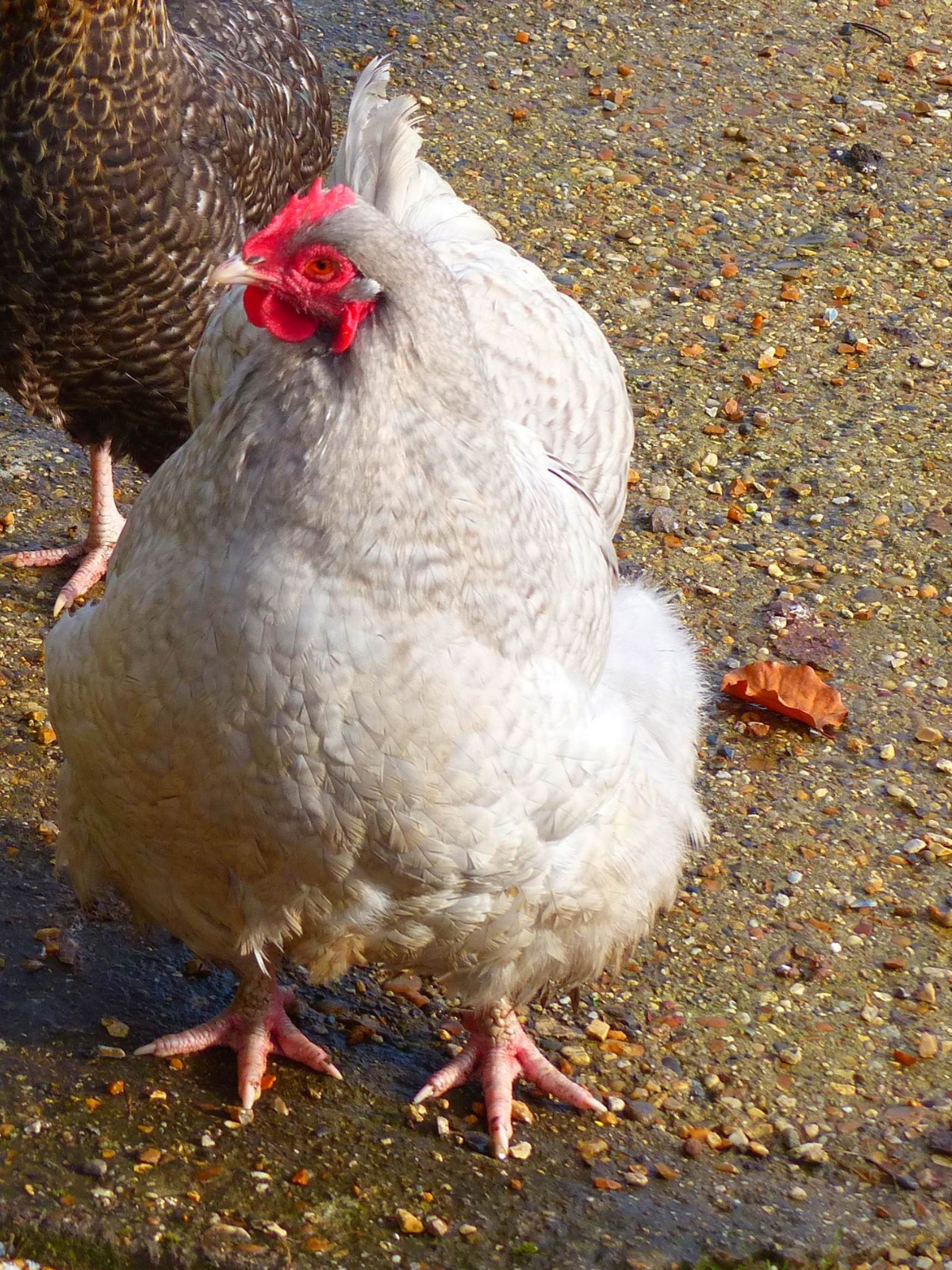
Buff Orpington
The most common variety, particularly in America, these chickens have light orange feathers with some subtle white accents.
Their legs are a pink-white color, while their beaks are more amber in hue.
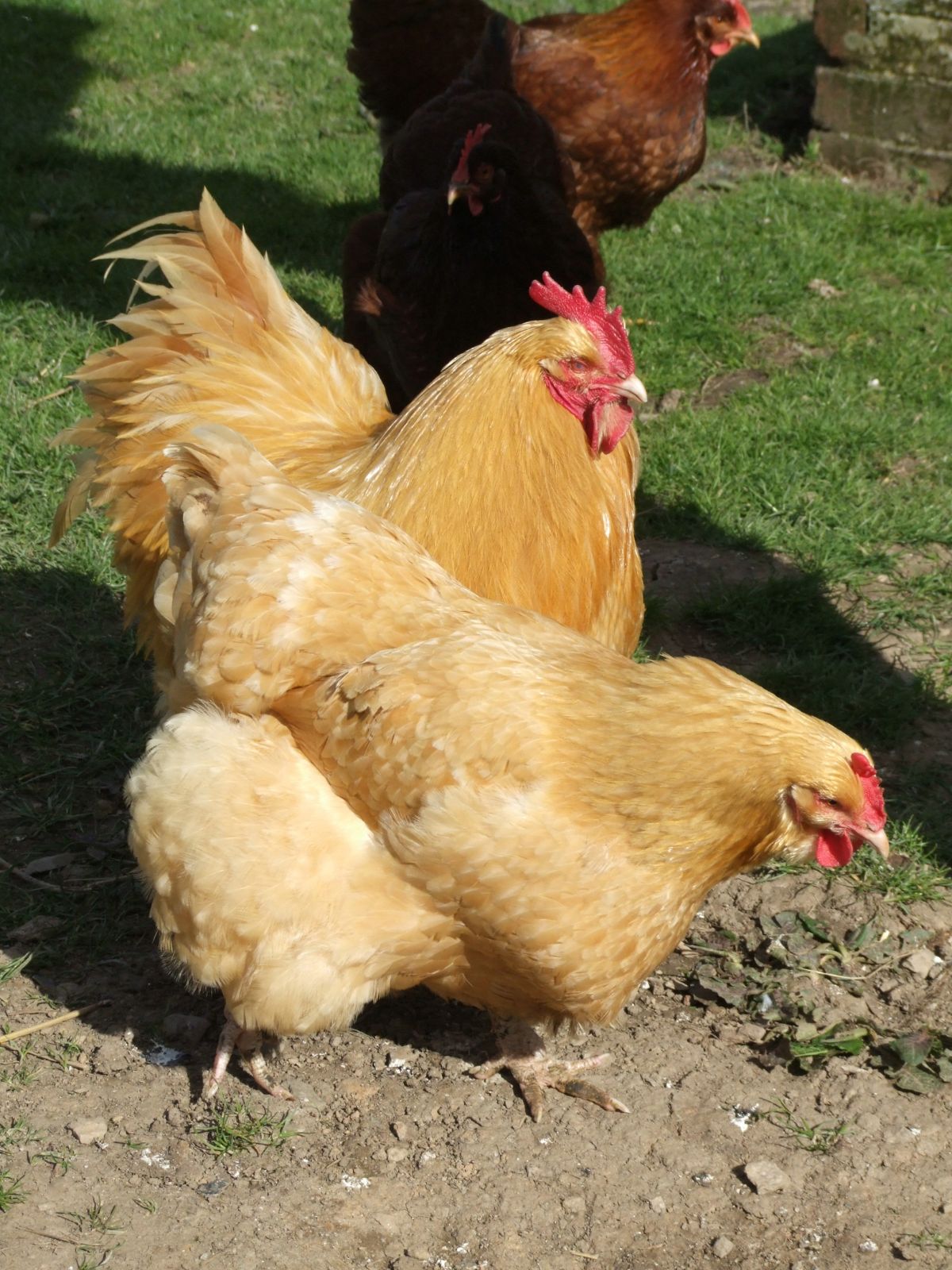
Temperament
Orpington chickens could be described as an easy-going chicken. Great with small children and excellent mothers to chicks, they would make a wonderful addition to any backyard coop. Neighbors likely won’t even hear the quiet clucking of these chickens.
Roosters in this breed are considered mellow and are unlikely to become aggressive. As with all chicken breeds, though, making sure they are well cared for will prevent them from becoming anti-social to humans or other chickens.
Hardiness
Cold weather is a dream for them, and they’ll handle the darker months well. As long as they have access to dry nests and roosts, they will also tolerate snowy weather admirably.
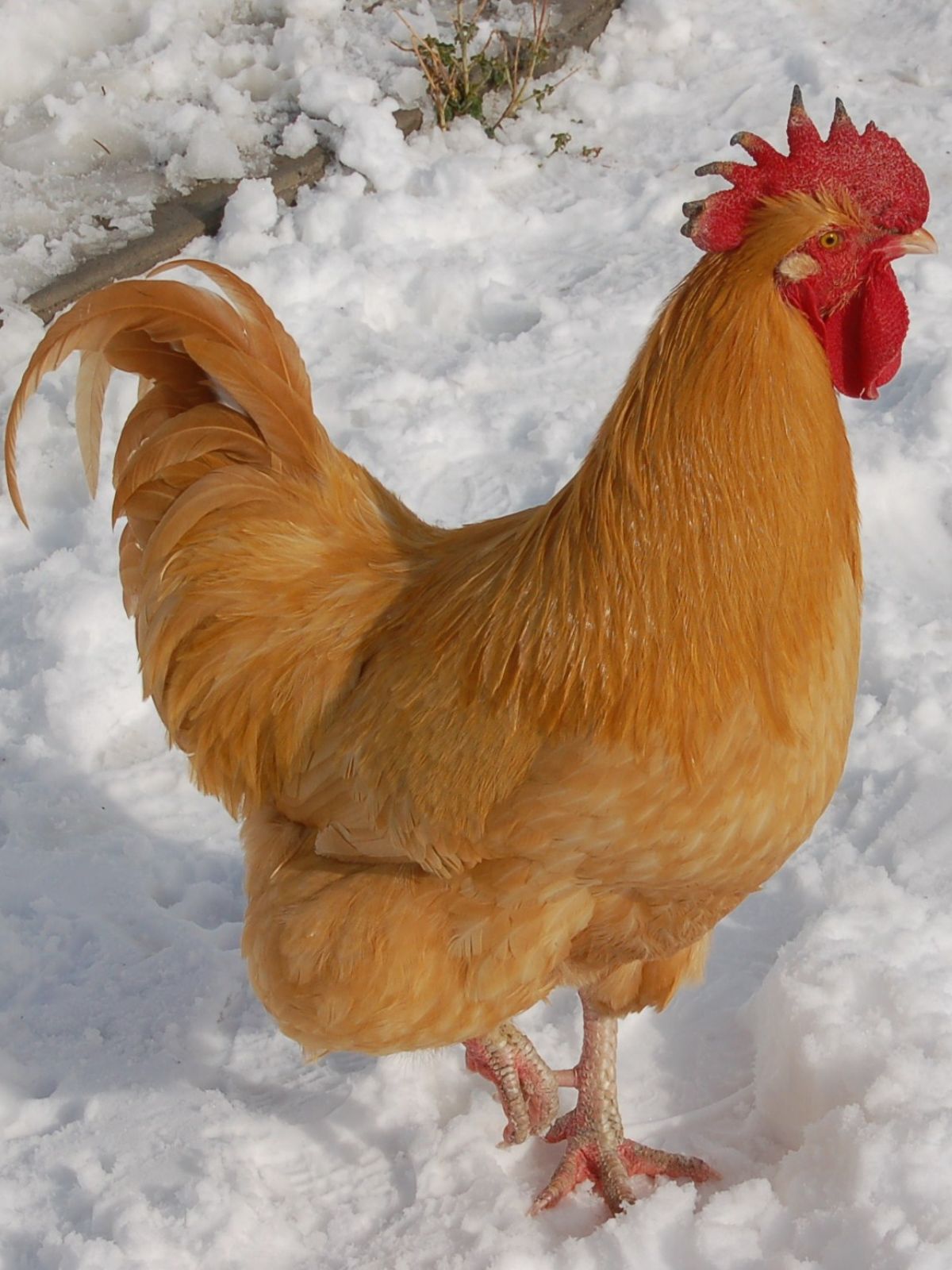
Egg Production
Eggs are one of the qualities these chickens are known for. While hens have been known to lay up to 250 eggs, you should expect the average hen to lay 150-200 eggs in a given year.
Egg Color
Orpingtons consistently lay light brown eggs that are sometimes described as “pink.”
Meat
Without a doubt, these chickens come in at a good weight for table meat. Many roosters have such broad breastbones they’ll bring in as much white meat as a turkey.
If anything, they actually have a tendency to overeat and under-exercise, meaning it’s very easy plump up these chickens! You can expect them to provide juicy leg and thigh pieces.
Broodiness
We tend to let our chickens go broody and raise out their own chicks, so the fact that Orpingtons are both broody, and exceptional mothers, is a benefit for us.
You aren’t going to get away from broodiness in your Orpington hens. While this means you’ll have good mothers for any chicks you want to raise (even across breeds), it does mean egg collection will be a bit more of a chore than usual.
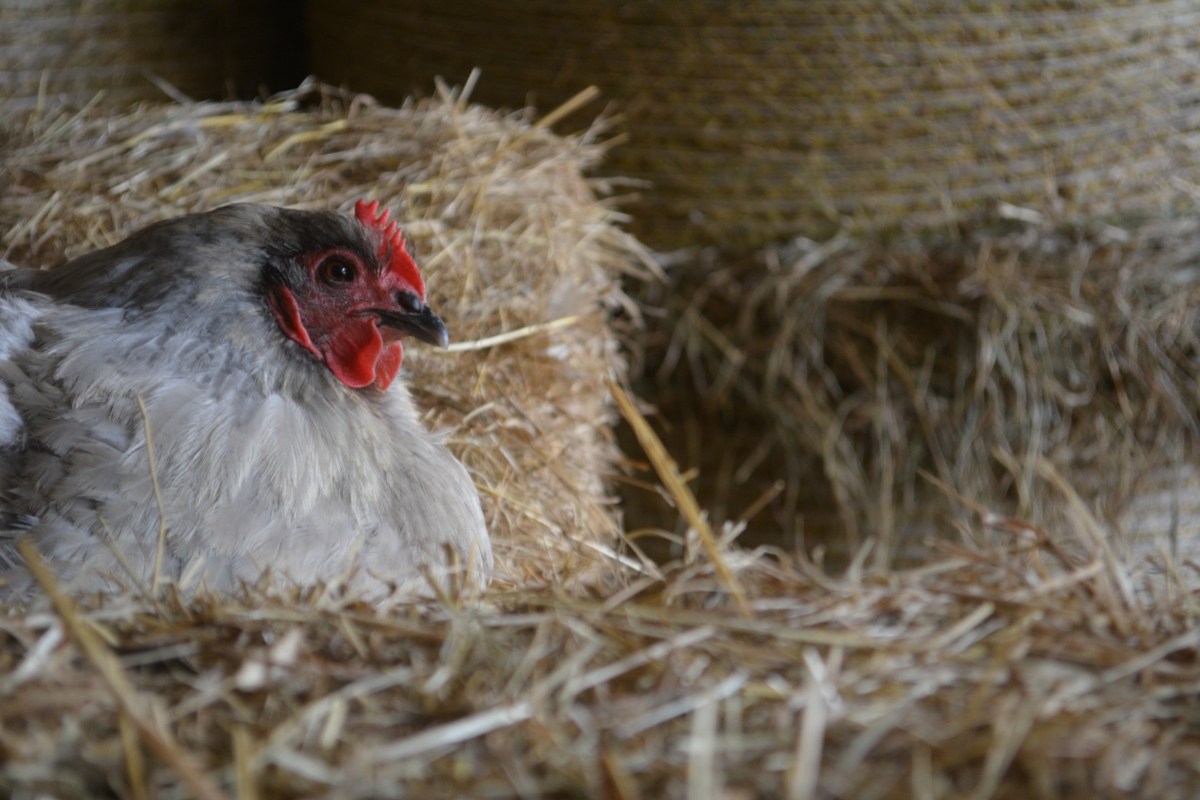
Foraging Ability
Food is a prime motivator, and you’ll find these chickens are happy to forage for snacks. However, they aren’t a restless chicken and will prefer to watch their feeding dishes for the majority of their food.
As these birds are large and take a while to mature, you will see higher feed costs for them.
Cross Breeds
According to Cook, they’re a cross between Minorcas, Langshans, and Plymouth Rocks. Though with any breeds that started pre-1900, there’s a chance different breeds could have been mixed in.
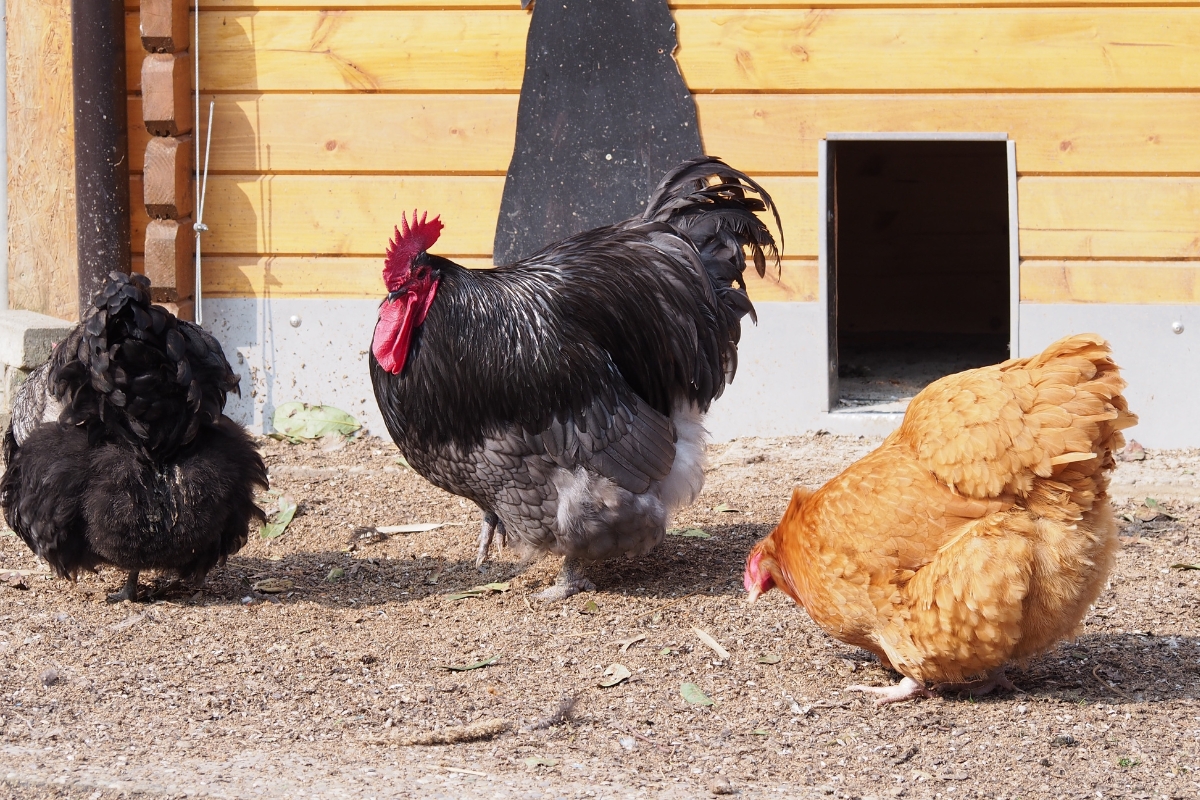
Common Health Issues
No health issues in particular plaque them. However, like many cold-hardy chickens, you’ll want to keep an eye on their feathers.
In the winter, make sure to provide dry lodgings for them; their feathers might pick up snow and put them in danger of frostbite. Throughout the year you’ll want to regularly check for mites and lice. Offering your Orpingtons a dust bath consistently will help prevent any pests from latching on.
Lastly, keep an eye on the weight of your hens. Without enough exercise, they may become large enough to cause egg laying issues such as prolapse and egg binding.
Tips for Raising Orpington Chickens
Beginners will find Orpingtons appealing. They’re healthy and quiet. For those interested in pets, they’re affectionate.
For space allowance, give each one at least 4ft square of space, though in a mixed flock 6ft square will serve you better. Each chicken will want 8-10in of perch space and 8-10ft square of run.
Perhaps the biggest concerns for owners will be weight maintenance and the chickens’ lack of fear. As a slow-pacer, they aren’t inclined to exercise, and you’ll need to make sure they aren’t overeating. When they do take to foraging, though, they don’t respond quickly to any predators in the area. You’ll want to make sure to monitor them while they’re out.
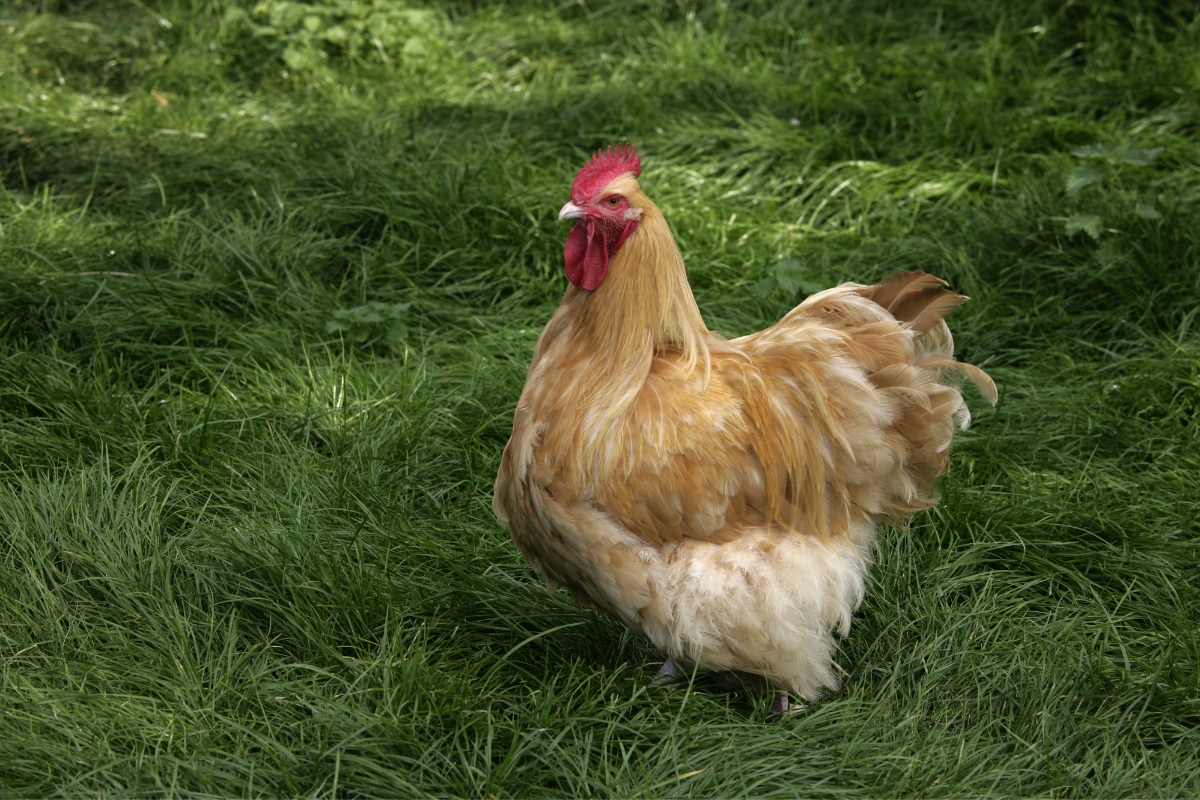
Orpington Chicken FAQ
Have some more questions, or just want to get a summary? See below for a bit more information!
Are Orpington chickens friendly?
Very! Laps are a favorite perch for these birds and they enjoy being pet by small children (and adults too).
Are Orpington chickens good egg layers?
Yes, you’ll find them very good layers. On average, they’ll give 3-4 eggs per week, maxing out at about 200 eggs per year.
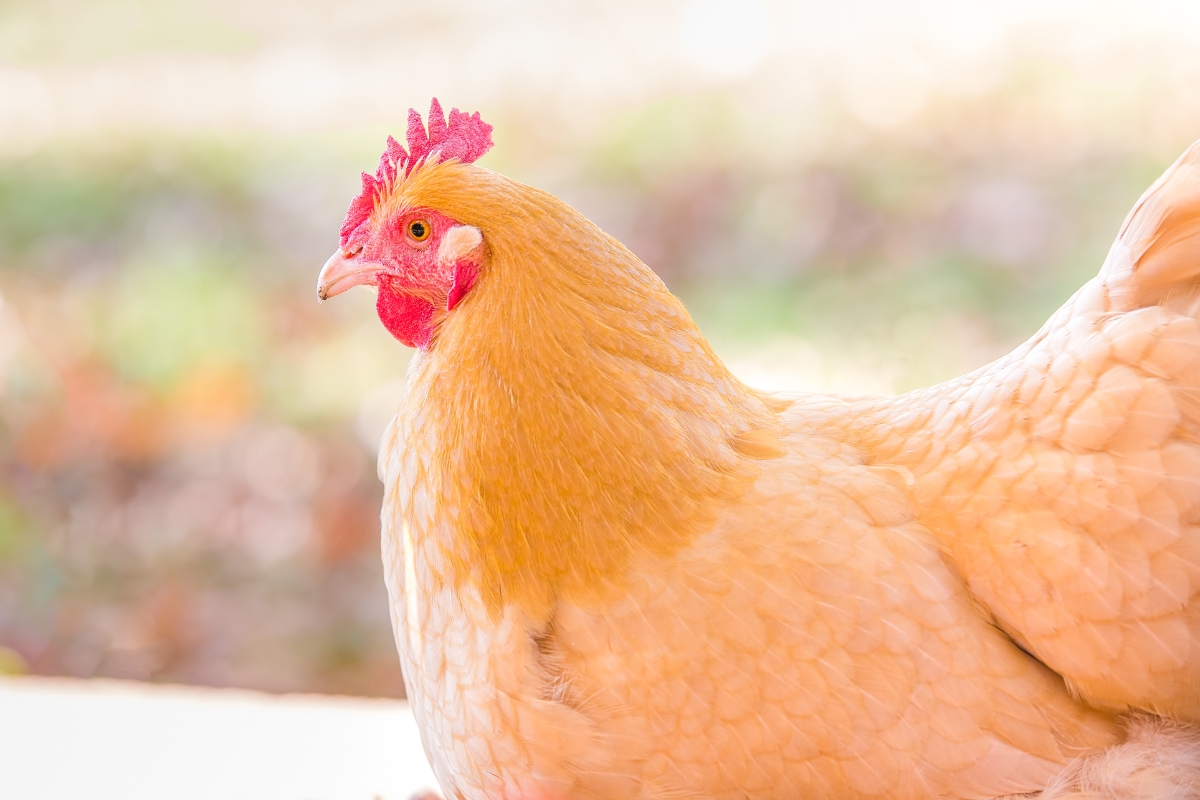
What color egg does an Orpington lay?
Their eggs are a lovely light brown color that some people describe as “pink.” They’re off-white, with the slightest hint of pink, and depending on the chicken, they may lay true pink eggs.
For the most part, they’re described as very light brown, but you may get lucky.
There aren’t very many chickens that lay pink eggs, and Orpingtons do it more often than others.
Are Orpington hens broody?
Yes. Yes, they are. You’ll want to make sure to give a little extra time to egg collecting to oust the hens still sitting each day. Though this will absolutely be in your favor if you want to raise any chicks.
How big are Orpington chickens?
Hens are in the 6-8lbs range, and roosters come in at 8-10lbs. Overeating is a common complaint with them, so it’s likely they could become heavier if you don’t keep them in check.
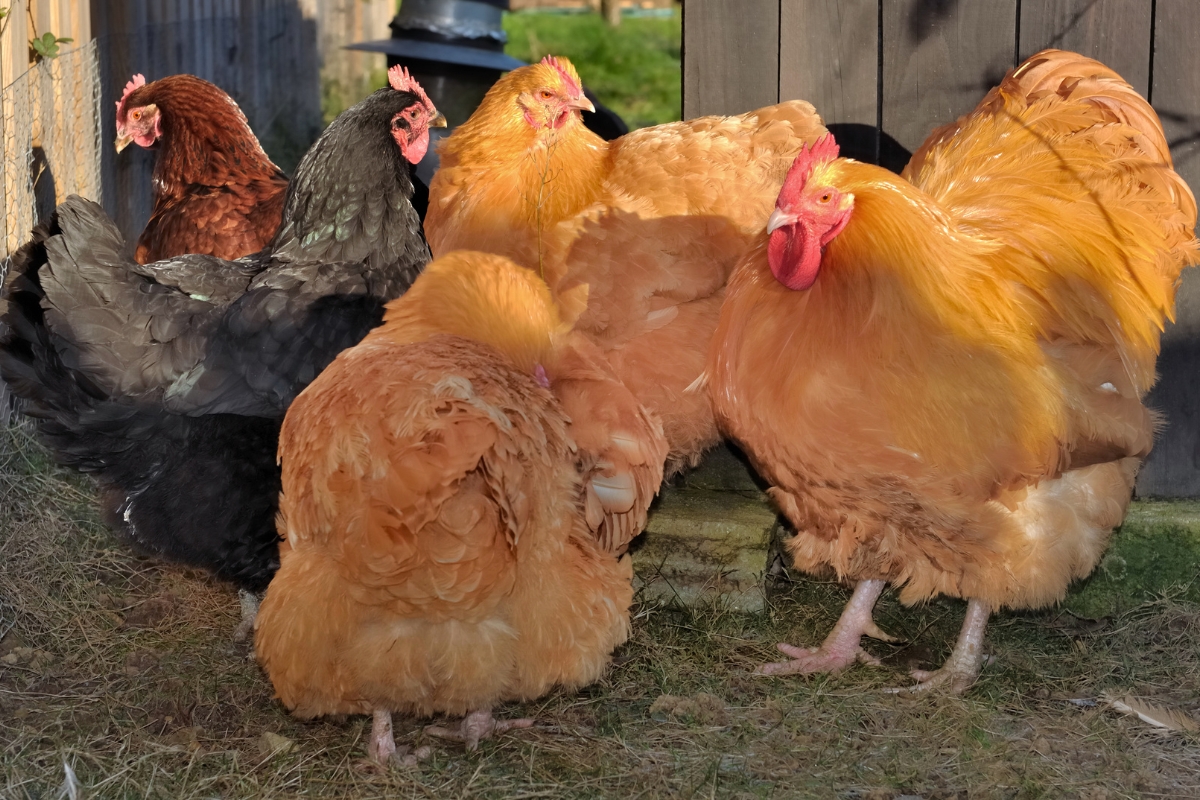
Are Orpington chickens good eating?
Juicy thighs and legs make for very good eating, a result of their sedentary lifestyle. You’ll also find they produce quite a bit of white meat too.
Are Orpington chickens autosexing?
No, Orpingtons are notoriously difficult to sex as they age. Males and females have similar coloration, and you might not know the roosters for the hens until they start laying eggs (or crowing). At the earliest, you might be able to tell around 8-10 weeks old, but it could take up to 16 weeks or longer.
Are Orpington chickens cold-hardy?
Known for their fluffy feathers, these chickens prefer the cold to the heat. If their feathers get wet from rain or snow, you’ll want to make sure they are fully dry to avoid frostbite.
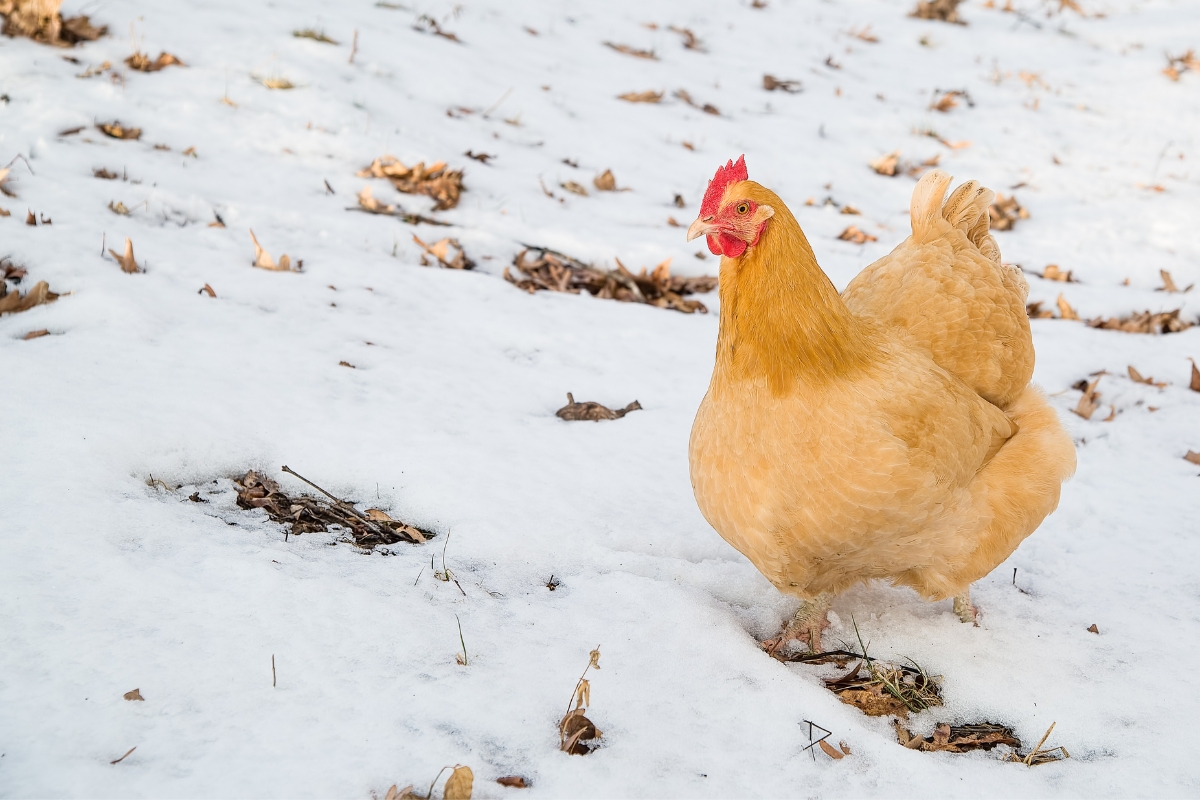
How long do Orpington chickens live?
On average, they live about 8-9 years.
You’ll find the hens will start laying at 22-26 weeks old once their wattles and combs darken to red. Hens will then lay consistently for 3-5 years before they reach retirement.
At the earliest, they will be ready to butcher at around 6 months old, though they might not reach full weight until 12 months.
Are Orpington chickens easy to raise?
Yes, you’ll find them very easy to raise. Coops may be the better option for them as they don’t have a strong sense of fear. However, they will need plenty of space to avoid getting restless.
Like all chickens, they will need quality feed to stay healthy and keep laying well. Chicks will need a crumb with 20% protein content until 16 weeks. After that, you’ll want to maintain them at 16% protein.
Chicken Breed Guides
Looking for more chicken breed guides?
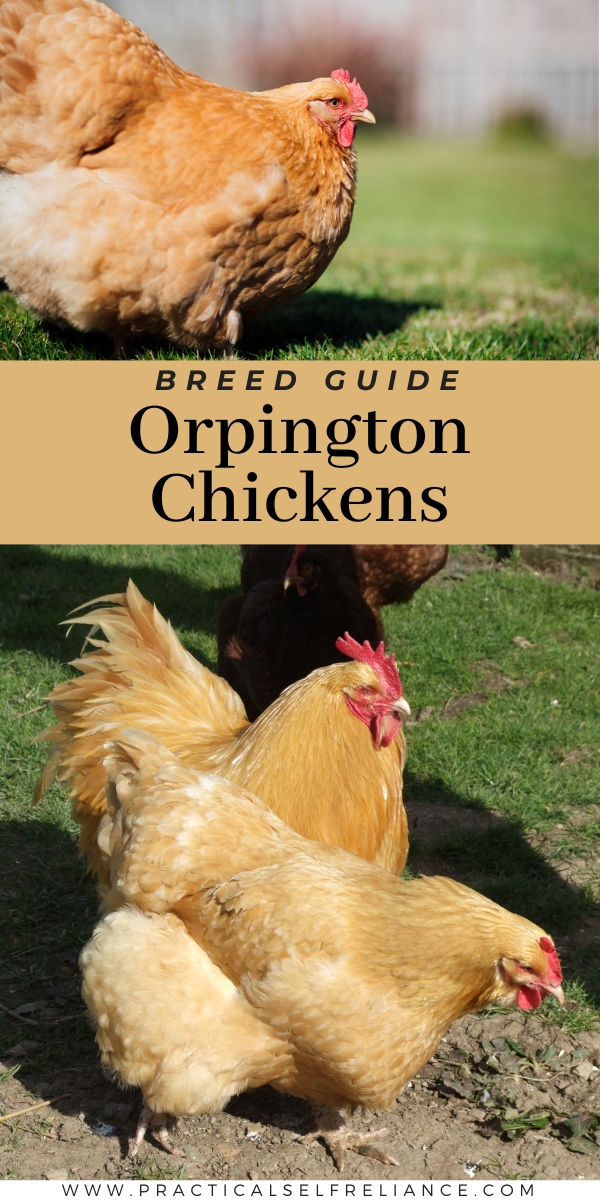

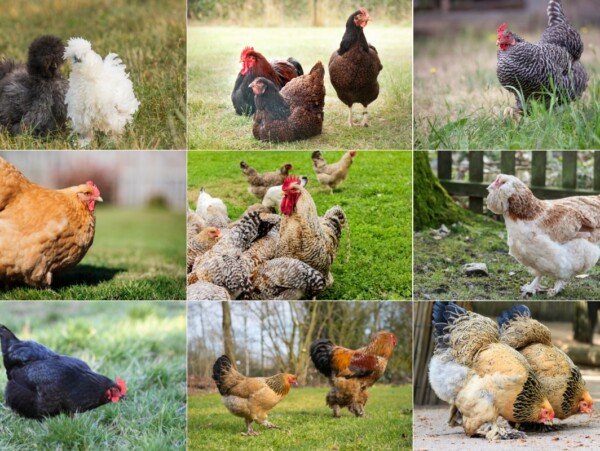
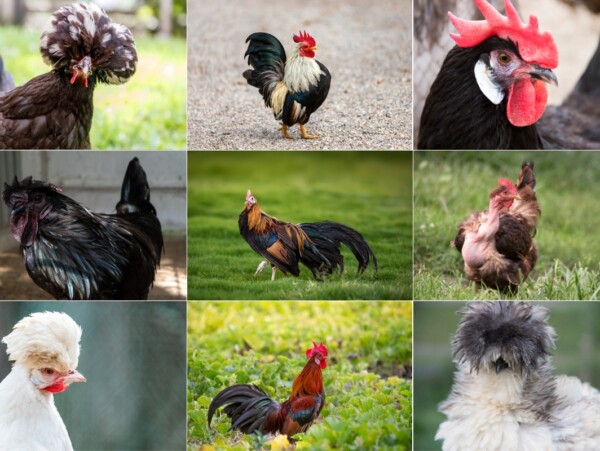
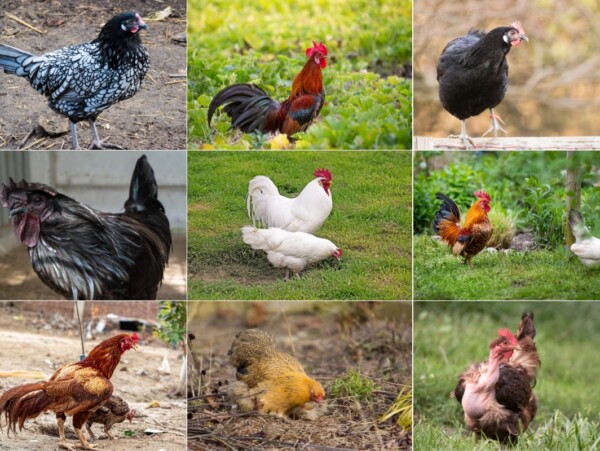










How can I buy buff orpingtone eggs?
Try your local farmer’s market.
Also they are laying in boxes but most trying lay one spot on corner of the coop and sometimes they are laying out in the run on the fence line only a few times though but mostly they share a spot in corner lol like 5 eggs each day . Is that a norm? Also what kind of veggies are good to give them? If any at all.
It’s totally normal for chickens to do this. They really can have most vegetables. You should avoid feeding them onions and peels from green potatoes.
I have lavender orphingtons 7 of them and a rooster and 3 white leg horns. I had to leave when they were younger and now they are skittish with me. How can I get them comfortable with me now I go out few times a day and throw scratch in the run try to get then comfortable but it’s not doing much good they running hide by rooster and he just crows lol anything I can do to get them comfy? They are laying awesome I get 7 to 10 eggs a day. Also not sure what to make their bath with and how big seeing they aren’t small birds minus the leg horns lol
I would just say that the more time you spend with them, the more comfortable they will become. Maybe crouch down on their level and just stay in the pen a while after you throw out the scratch. Try to get them to come closer to you to get the scratch and they will most likely eventually warm up to you.